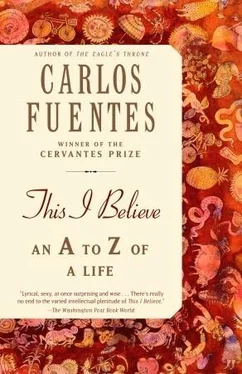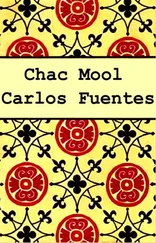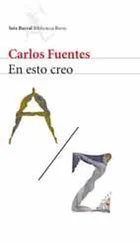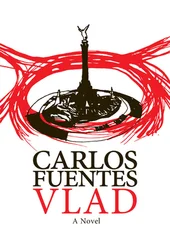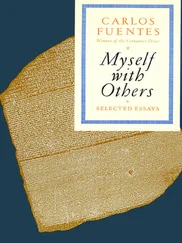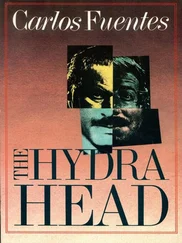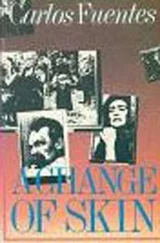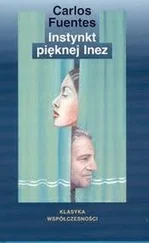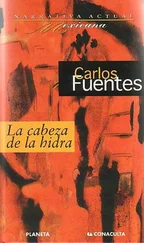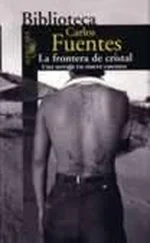It is a bitter host. It has no answer. We don’t know what the body is. We don’t know what the soul is. And nothing identifies us more than the fact that we don’t know what we are. As St. Augustine said, “Man cannot understand the manner in which the body and the soul are united and yet, that is precisely what man is.”
Somewhere (I cite from memory) Ortega y Gasset says that for Aristotle, the centaur is a possibility. This is not true for us, because biology forbids this.
The zebra, despite its visible presence among us, always produces bewilderment. His black and white stripes give him away. Without this stamp, he would be a horse. Thanks, however, to his singular design, he has bestowed a name upon both a butterfly (the papilio marcellus ) and a plant (the zebrina, commonly found in Mexico and Guatemala). The fact that its name is reflected in things as dissimilar as a butterfly that reproduces several times a year, and a plant that creeps like a serpent and whose generic name in Spanish is araña, or spider, makes a person think that one day the zebra, like Ortega’s centaur, will be rendered inadmissible by logic but admissible by fantasy. Once upon a time, the zoologists tell us, there were zebras that only had stripes on their head, neck, and breast. One day there will be zebras that exist only in the imagination and that will be worthy representatives, as in this book (instead of Zanzibar, Zeus, Zacatecas, Zapata, zagal, zafarrancho, zapato, zanahoria, zorro, zumo, or zoology), of the most difficult letter in my personal A to Z.
Fantastic zoology. The novelty of the American continent is no stranger to the imagination of that continent. The chronicles of the Indies are replete with fantastic sightings of fauna that had never before been seen, adding indispensable detail to illustrate the very notion of “discovery.”
If the fantastic is, as Roger Caillois has defined it, a duel with fear, then imagination is the first exorcist of the fear of the unknown. The European fantasy of America evolved through the fabulous bestiarios, or beastly inventories, compiled in the Indies, where the Caribbean Sea and the Gulf of Mexico are described as the habitats of mermaids that Columbus himself spotted on January 9, 1493. Apparently the mermaids “left at very high tide,” although the admiral also admits that “they were not as lovely as they were reputed to be, and in some way their faces in fact bore the contours of men.”
And then there was Gil González, explorer of the Panamanian isthmus, who traveled across a wide swath of dark sea to encounter “fishes that sang in harmony, as they say the mermaids do, and who sleep in the very same manner.” And Diego de Rosales tells of “a beast that rose up from the water and exhibited its frontal side, with the head, face, and breasts of a woman, well-formed, with cascading blonde tresses and manes, and a small child in its arms. As it dove back under, they noted it had a tail and the back of a fish. . ”
It may be that the feverish imagination of the sailors who explored the Caribbean and the Gulf of Mexico did not, in fact, see mermaids but whales, given that the latter were described as having “two breasts on the torso” (thank goodness) “so as to give birth and suckle their young,” as Fernández de Oviedo wrote.
More problematic, however, is the configuration of the so-called fish-sharks of these waters, also described by Fernández de Oviedo, with even greater anatomical precision this time. “Many of these sharks I have seen,” he writes in his Sumario de la Natural Historia de las Indias ( Compendium of the Natural History of the Indies ), “have their virile or generative member doubled. What I mean to say,” Oviedo adds, “is that each shark has two penises. . each one is as long as the distance between the elbow and the most extreme fingertip of a very tall man.”
“I cannot say,” the chronicler discreetly admits, “whether in practice he uses both of them together. . or each one separately, or at different times. . ”
As far as I am concerned, I can’t decide whether I ought to envy or pity those sharks in the Gulf of Mexico and the Caribbean, but I do recall, thanks to the chronicles of Pedro Gutiérrez de Santa Clara, that luckily these beasts only give birth once in their lives, something that seems to contradict the very existence of such an organ and its functions — one, abundant, and the other, barren. .
The letters of Pedro Mártir de Anglería, recounting the astonishing bestiaries of the American seas, were the object of scorn in papal Rome — that is, until a man named (also astonishingly) Juan Rulfo, who was both the archbishop of Consenza and the pope’s legate in Spain, confirmed the tales that Pedro Mártir had told and further broadened the realm of all that was “marvelous yet real” to include things like the guitar-fish that was capable of sinking an entire ship with its mighty horn; or the cocuyo, a glowworm whose light allowed the natives to “thread, weave, sew, paint, dance, and do other things in the nighttime. . they are the lanterns of the coasts.”
The pelicans that cloak the air in search of sardines. The vultures or buzzards that Columbus spied on the coast of Veragua, “repugnant, abominable birds” that would swoop down upon the dead soldiers and who were “an intolerable scourge to those of the land.” This is the night of the iguana, and Cieza de León does not know “if it is meat or fish,” but he does know that when young it glides across the waters, just grazing the surface, and when old it lumbers slowly across the floor of the lagoons.
The list of enchantments continues. The turtles with shells large enough to cover a house. Fertile tortoises that lay broods of a thousand eggs upon the sands of our seas. Beaches of pearls “some as black as jet, others tawny-colored, and others as yellow and resplendent as gold,” writes Fernández de Oviedo. And the mythical salamander that burned in its own skin but at the same time was so cold, as Sebastián de Covarrubias recorded in his Tesoro de la Lengua Castellana ( Treasure of the Castilian Language ), that “as it walks over coals it extinguishes them as if it were made of pure ice.”
The marvels of the seas and shores of the Discovery soon took their place among the great wonders of civilization, magnificently described by Bernal Díaz del Castillo as he and Hernán Cortés’s troops entered the Aztec capital, México-Tenochtitlán.
Bernal’s vision almost seems to take us into another branch of fantasy, that of science fiction. The most brilliant writer of this genre, Ursula K. Le Guin, notes that science fiction is almost always the history of the future, even though everything seems to occur outside of time in the fantastic psychomyths of fantasy literature — in the living region of the mind, as Le Guin conceives of it, where there is no temptation of immortality at all, where spatial and temporal limits no longer seem to exist. This, in turn, allows what H. P. Lovecraft, American master of the macabre, proposed to such resounding success: the invention of worlds that are not outside time and space, but that in fact possess time and space that are probable and perhaps even memorable. This is what the Polish writer Stanislaw Lem achieves in his marvelous story “One Human Minute”: he takes an inventory of each and every person inhabiting the earth, in one single minute.
Given that the “modern” list of these timeless writers extends from Voltaire ( Candide ) and Beckford ( Vathek ) in the eighteenth century through to Ray Bradbury, Arthur Clarke, and Isaac Asimov in the twentieth, and given that their themes run from the evocation of the most remote past (Frazer and Frobenius) to the creation of a future that is quite close at hand (Verne and Wells), my own selection leads me from the fantastic imagination of the American explorers and their bestiaries of the Indies to the most repulsive form of replicating nature: the artificial creation of the human being in the scientific laboratory, the progress of mechanics, and the substitution of the divine: Mary Shelley and Frankenstein.
Читать дальше
